MONTESSORI TOPICS
Preparing your child for our Montessori classroom

Our Montessori classroom is set up for children to be extremely independent, explore and learn with minimal guidance from the Directress. Hence, it is a good idea to encourage your children with similar settings at home to ease the transition.
Here are some simple ways to integrate Montessori in your home to ease your child’s transition to our school a smooth one:
-
Set up plates, cutlery, and cups in a cupboard accessible to them.
-
Ensure a healthy snack is available to them (other than during meal times) in a drawer accessible by them.
-
Set up a small table and chair for them to use as a snack or activity table.
-
Ask children to always tidy up after they are done with their meals or activities. Ensure they put away their things or toys before they access another.
-
A coat hook, shoe rack at their height will help them to be independent in dressing themselves.
-
Ensure they wear comfortable clothing that they can pull up or down without an adult’s help when they use the washroom. Encourage them to use the washroom without help. We are always there to help should they need help. However, it increases their confidence when they are able to do some of this on their own.
-
Buy them shoes with velcro straps as opposed to shoes with laces. Encourage them to put on and take off their shoes by themselves.
-
Ensure they are comfortable using washrooms at places other than at home so that they are not shy to use the washrooms at school as, understandably, it is a common issue we face with new children.
-
Ensure weather-appropriate clothing is at a level accessible by them. Encourage them to pick their clothes for the following day and set it out the previous night. This will save a lot of hassle while getting ready for school in the mornings.
-
Engage them in a conversation about what they think should be packed in for lunch.
Before starting school, talk to your child about coming to school. Drive by the school a few times so that the child is aware and the first day is not overwhelming. And once they start attending school, engage them in short, meaningful conversations about school. Ask them what they did at school, if they made any new friends, and about the teachers, etc.
Freedom, independence, and self-learning are important elements of a Montessori classroom.
Above all, give us a lot of feedback and let us know their preferences and dislikes. It is important for us to know if there are changes in the home environment – e.g. mom or dad is away on a business trip, someone is ill, or whatever else that could affect the mood of the child so we can provide better care.
Please remember, we care for each child individually. So, the more we understand your child and the changes in his/her environment, the better we are able to help him/her comfortably adjust to the school and focus them on learning.
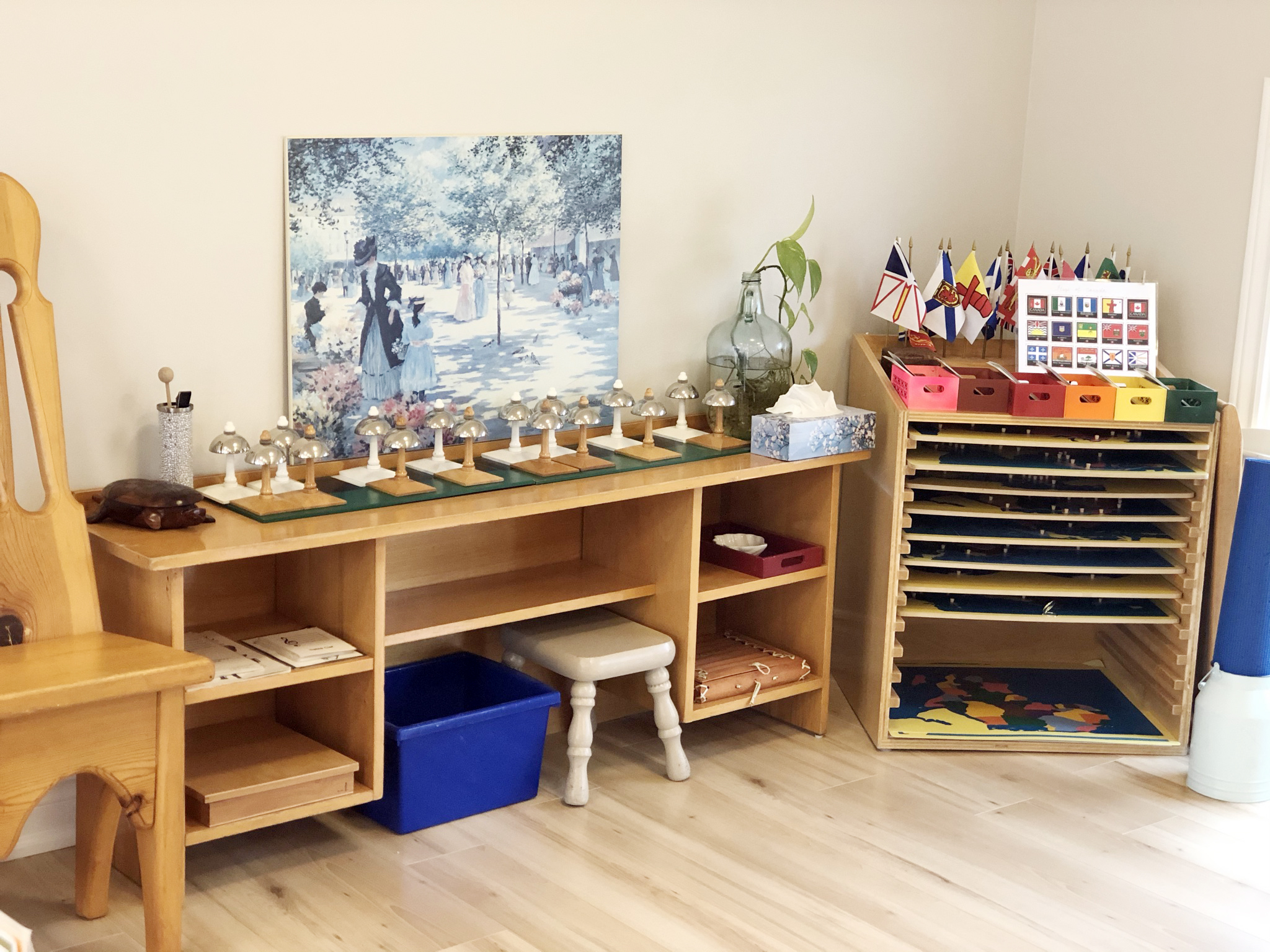

Kalpana Gananathan,
Founder, Administrator, and Directress,
KinderHaus Montessori
MONTESSORI TOPICS
Cursive Writing – Natural for a child

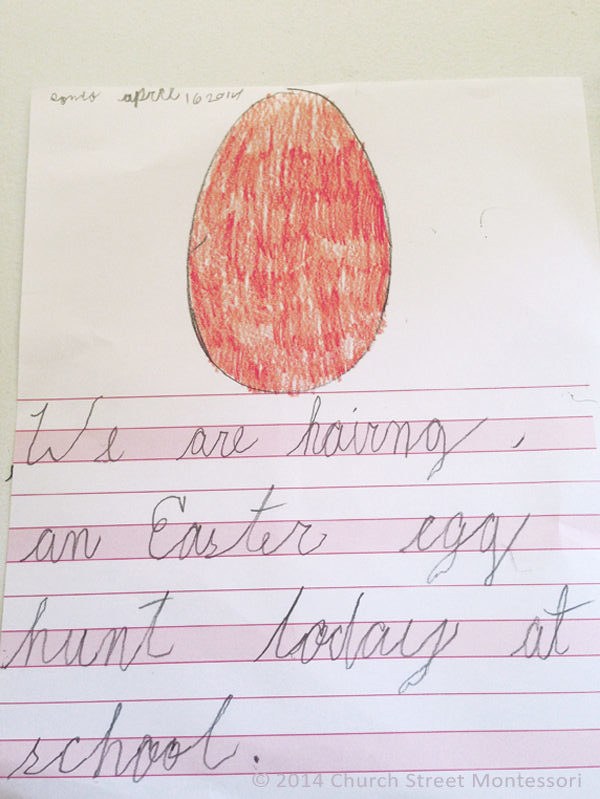
An authentic Montessori classroom introduces children to cursive writing as cursive follows the child’s natural ability to scribbles in continuous circles.
Dr. Montessori understood this 100 years ago through her observation of children from across the globe. She simply “followed the children” and observed that all young children in possession of a crayon, a pencil, or a chalk scribble in continuous circles. She noted that, contrary to the popular myth, the action required to print, i.e., writing-lifting-spacing and writing again, is unnatural to children.
Myth: Printing is easier to learn as children
often get confused with cursive.
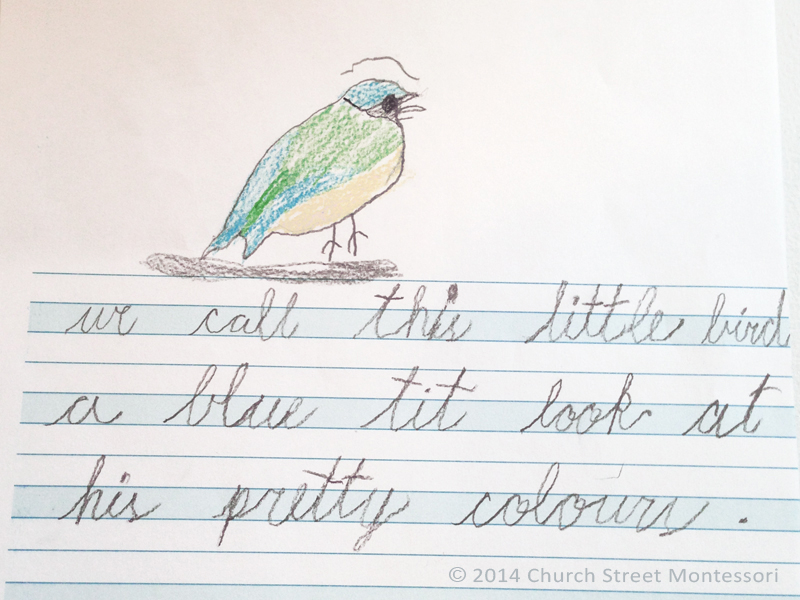
As Dr. Maria Montessori did 100 years ago, we also find our children grasping the concept of cursive and write beautifully very quickly.
To prepare children for writing, our classroom is filled with activities that help with pincer grip, lightness of touch, and the movement of hands such as tracing the letters. They are encouraged to master these skills before beginning to write on a chalkboard.
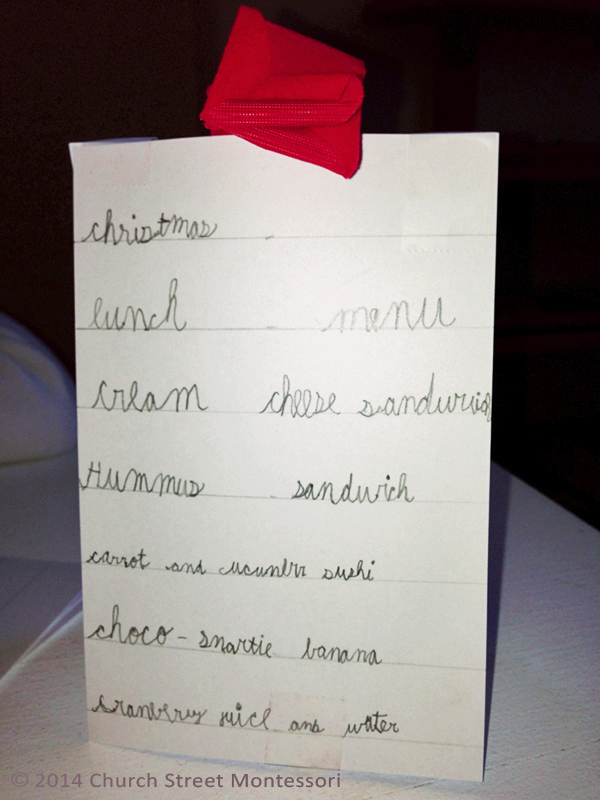
One of the advantages to cursive writing is that we do not need to give children explicit rules as to when a word ends and when the next word begins, to keep spacing short between letters of a word and to give more space between words, etc. This comes naturally since they need to lift their pens between words.
Cursive writing feels natural to children as they don’t have to lift after each letter. Simple writing instructions regarding spacing etc. are easy for them to grasp and, hence, they learn to write cleanly and evenly without the letters and words going up and down. They also learn to understand the concept of sentences very quickly. We often find children showing a sense of pride and confidence, and once introduced to writing, wanting to write more.
Illustrated here are some examples of our young ones’ cursive writing. Impressed?

Montessori Classroom – Structure with a purpose

A Montessori classroom is organized for children to explore and learn through activities on their own – collaboratively and individually with very minimal interventions from the adults in the classroom.
As trivial as it might seem, there is detailed attention paid to every part of a Montessori classroom. Predominantly a classroom is divided into five primary sections – Practical Life, Sensorial, Language, Math, and Culture. In some classrooms, Culture may be incorporated as part of the Sensorial section. The materials in every section are organized in a left to right manner, easier materials on the left progressing to more complex materials on the right. This is an indirect preparation for reading from left to right. Every material belonging to a learning activity is child-sized, age-appropriate and complete with-in itself.
Myth: Unlike a traditional classroom, a Montessori classroom is unstructured and unorganized.
The concept of “complete within itself”: Every activity is set up with all the materials needed to complete that activity. For e.g., activities needing aprons have aprons of their own, as opposed to one apron being used for different activities. This helps the child to be able to access the material at any point in time without having to wait for an apron that is being used by another child.
A material is chosen for presentation by the directress, based on a child’s ability to handle the material properly and understand its underlying purpose. When at the table or the mat, the materials are set up in an organized manner from left to right. The presentation is slow and steady in order for the child to absorb the essence of the material. Sometimes, a material is re-presented to the child a few times for him/her to grasp the concept. No child is ever told or made to feel like he needs to have mastered a concept because he is of a certain age.
In short, a Montessori classroom is an enriched learning environment that sets up every child for success through independent learning, devoid of judgments from adults.
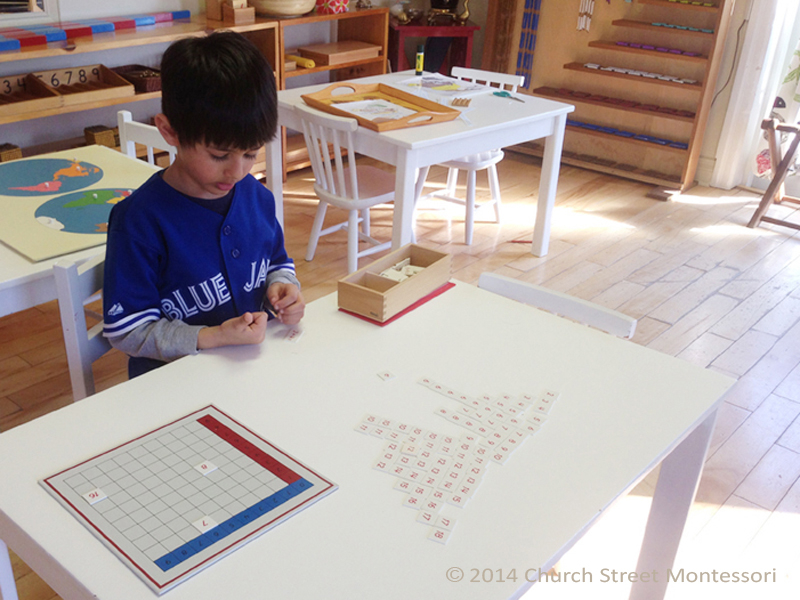
This site is protected by reCAPTCHA and the Google Privacy Policy and Terms of Service apply.


